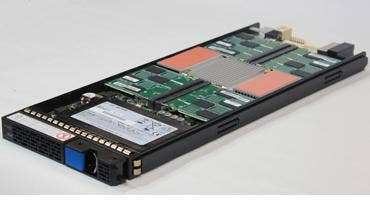HDS Revs Up Storage Line With Flash Acceleration

Hitachi Data Systems beefed up the performance of its midrange storage offerings with the addition of new flash storage acceleration hardware and enhanced software to take advantage of the new technology.
HDS also unveiled its first midrange all-flash storage solution and added file storage capabilities to its previously block-storage-focused Hitachi Unified Storage VM solution, said Bob Madaio, senior director of product marketing at the Santa Clara, Calif.-based storage vendor.
The moves come from customer demands for more efficiency in their storage infrastructures, Madaio said.
[Related: Hitachi Data Unveils HUS VM: Unified Storage For SMEs ]
"The challenge is to move away from focusing on just keeping the lights on and toward user needs for virtualization; for unified file and block, and virtual and physical, storage; for convergence; and for automation," he said.
Several of the enhancements are centered on the Hitachi Unified Storage VM midrange solution first unveiled in September.
HDS introduced an Hitachi Accelerated Flash Storage card for its Hitachi Unified Storage VM as a way to increase the performance of the storage solution for small and midsize enterprise customers, Madaio said. The Hitachi Accelerated Flash Storage cards, which Madaio said were designed by Hitachi and not by an OEM partner, initially were released for use with the company's enterprise-class Hitachi Virtual Storage Platform.
To take advantage of the Hitachi Accelerated Flash Storage cards, HDS also unveiled a new flash-optimized version of its Hitachi Unified Storage VM operating system, enabling it to be configured as an all-flash storage solution, Madaio said.
"With the new [Hitachi Unified Storage] VM OS and the Hitachi Accelerated Flash Storage cards, the [Hitachi Unified Storage] VM can perform at 500,000 IOPs," he said. "This fall, we will take that to 1 million IOPs."
The flash technology is huge news for HDS customers, said Joe Kadlec, vice president and senior partner at Consiliant Technologies, an Irvine, Calif.-based solution provider and HDS partner.
"Any of our customers who have a poor-performing application, or a mission-critical application, will use a flash storage upgrade," Kadlec said.
Flash storage upgrades are much better than adding SSDs to get increased performance, Kadlec said.
"The enhancements solidify the Hitachi storage story," he said. "As we get more into converged environments, customers are embracing the availability and performance of Hitachi from top to bottom."
NEXT: HDS' New Converged Infrastructure Offerings
HDS also is adding file-based storage, or NAS, capabilities to the Hitachi Unified Storage VM platform via three new 4000-series storage systems, and allowing tiering of both block-based and file-based storage across hard drives, SSDs and flash storage, Madaio said.
The new hardware allows the consolidation of multiple NAS filers into a handful of Hitachi Unified Storage VM nodes to cut total cost of ownership by 30 percent or more, he said.
Also new from HDS is several new versions of its Hitachi Unified Compute Platform converged infrastructure offering.
Ravi Chalaka, vice president of solutions marketing for HDS, said HDS upgraded its Hitachi Unified Compute Platform Pro, a solution that combines the enterprise-class Hitachi Virtual Storage Platform with Hitachi's CB500 blade servers, Brocade networking technology, VMware vSphere virtualization software, and Hitachi's Unified Compute Platform Director management software.
New this month are the Hitachi Unified Compute Pro for VMware VSphere, which now includes Cisco networking equipment as an option to the original Brocade technology, and the Hitachi Unified Computer Pro Select for Microsoft Private Cloud, which adds capabilities for Microsoft Hyper-V 3.0 virtualization.
HDS also introduced the Hitachi Unified Computer Pro Select for Oracle RAC, a new solution that competes with Oracle's Exadata appliance. "We're bringing Unix performance to x86 technology," he said.
PUBLISHED JULY 17, 2013